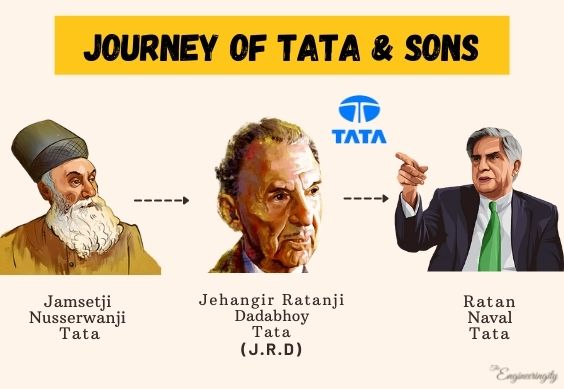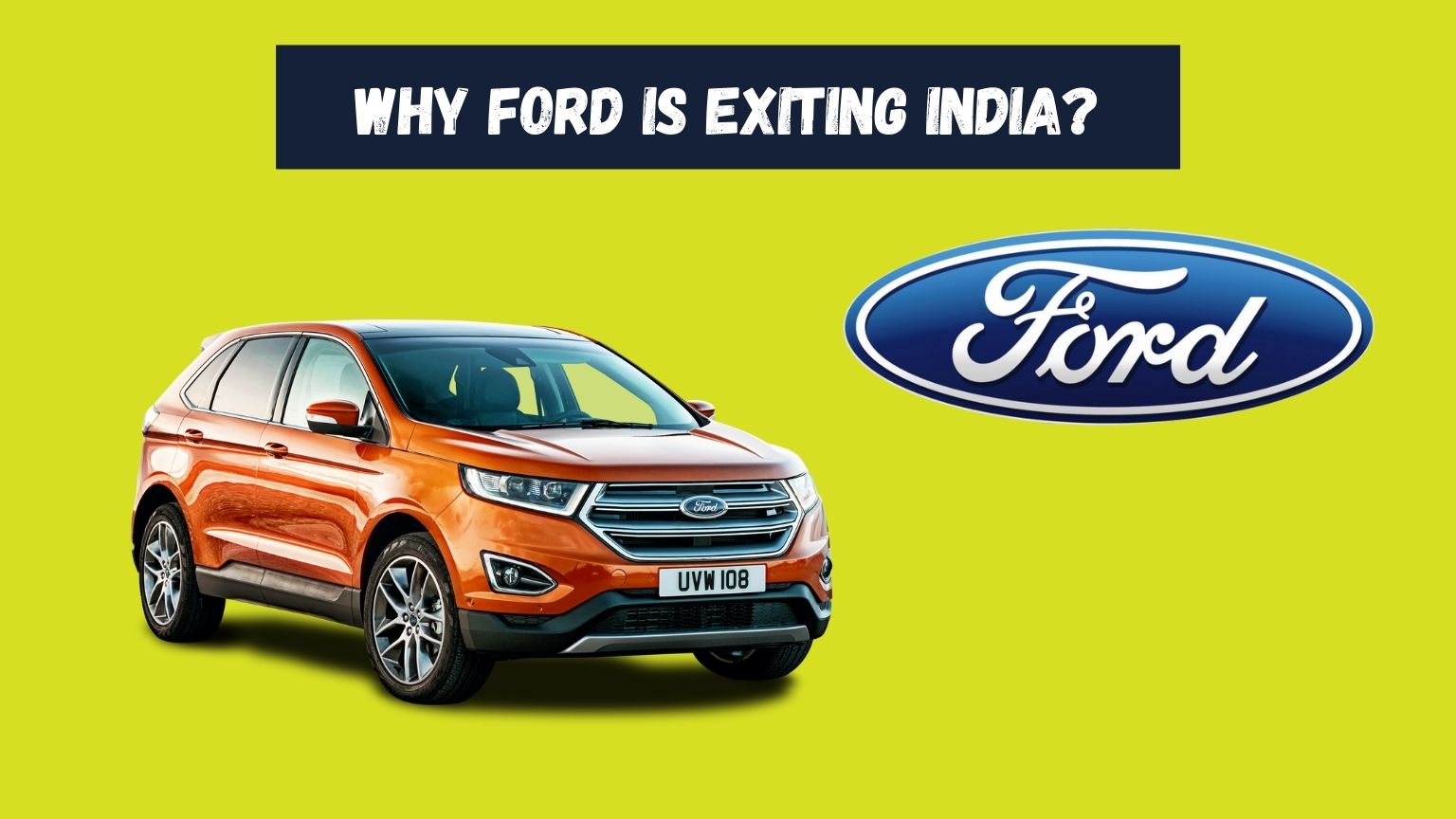Tata the industrial conglomerate that predominates at the heart of India's resolution in the Global Business stage. For nearly two eras the TATA Group has built multiple industries in India and remains a market leader in most of them. You probably must have heard about the Tata Motors car division but you will soon discover that their reach extends notably exceeding that one subsidiary.
We'll see how 3 generations of TATA businessmen have established one of India's most successful companies.
History before the beginning of Tata
The tale of Tata starts during the reign of the British Empire. India was a huge exporter of cotton back then, but the brutal regimen of the British East India Company left little room for local entrepreneurs to develop.
The poor treatment by the British eventually resulted in a revolt against them in 1857 which ended the power of the British East India Company and replaced it with the British Raj. Now compared to its ruthless predecessor the Raj was much more focused on keeping the peace. The Raj didn't exploit the Indian population quite as harshly and it also invested a lot of money for example in building India's first Railway.
Jamsetji Tata Era
Of course, at the end of the day, the British Raj was still an oppressive colonial power but at least it finally gave the local population the economic opportunity to develop themselves. Because India was an exporting land the first Indian entrepreneurs came from exactly that sector and one of them was Jamsetji Tata. He was the son of an exporter in Bombay(Mumbai) and he graduated in 1858 it was the precise opportunity to take benefit of the economic reformations of the British Raj.
Because his father's export business was developing in 1859 Jamsetji Tata went to Hong Kong to develop a subsidiary there and upon seeing the share scale of British trade there, he realizes that the Tata export business must truly have Global potential. Over the next decade, he could visit Japan, China, and Great Britain building a network of distribution for his father's business.
Who Started Tata Industries?
Jamsetji Tata ultimately formed his own exporting business in 1858 and using the money he started manufacturing textile mills (Empress Mills in Nagpur in 1874) of his own effectively conceiving a vertically combined business.
When did Jamsetji Tata Start?
From the very start, Jamsetji Tata's perspective was to find the best practices used across the world and bring them to India. In his textile mills, he introduced policies that were practically unknown to most of India like granting sickness perks and pensions to his employees. But Jamsetji wasn't satisfied with just the textile industries, he witnessed wonders in Industrial Revolution that had been created in Europe and he aspired to recreate them back home.
He commenced working on the Steel production plant in 1901, modeled after the one seen in Germany(Krupp Steel). Even more ambitious was his Hydroelectric plant motivated by his visit to the Niagara Falls power plant in 1903(Edward Dean Adams Power Plant).
Tata's Identified Power of Tourism
Jamsetji realized the incredible power of tourism and so he also created a chain of hotels starting with the Taj Mahal Palace Hotel which even today is one of the most recognizable buildings in Mumbai.
Jamsetji Tata was truly a man devoted to business and also helped people through it he valued education to a certain point he donated lands and buildings towards the making of the Indian Institute of Science, the renowned University of India.
Who Owns Tata Group?
However, Jamsetji Tata didn't live to see most of his project complete because he died on a business trip in Germany in 1904, leaving the already sizable Tata Company to his two sons.
Sir Dorabji Tata Trust in 1932.
Sir Ratanji Tata Trust in 1918.
Together they solidified their ownership into a single holding company which in turn is owned by the Charitable Trust they planned for future generations. They had a great vision of the Future.
Future generations of Tatas
Jamsetji Tata's sons fulfilled many of his ambitions they oversaw the creation of India's first Steelworks in 1907, India's first cement plant in 1912, and the first indigenous insurance company in 1919. By the time the leadership mantle passed onto the next generation in 1938 Tata Sons was comprised of 14 different companies. Wherein that Power was established in 1910 and Tat Oil Mills in 1917.
This time however instead of going to one of Jamsetji's grandsons, leadership rather went into the hands of a distant cousin with a profoundly interesting background.
Jehangir Tata Era (J.R.D Tata)
Jehangir Ratanji Tata better known as J.R.D Tata has been in the company since 1925 but he had been raised in France and was a dear friend(Louis Bleriot) to the gentleman who made the first flight across the English Channel (The flight happened in 1909).
In other words, J.R.D Tata was a passionate Aviator, and in 1929 he obtained India's first pilot license so unsurprisingly his first big project at Tata was to develop an Airline.
How did Tata Airlines begin?
J.R.D Tata was the founder of Tata Airlines. In 1932 Jehangir Tata (J.R.D) developed the Tata Air Service which first only transported mail but then in 1938 started arranging passenger flights as well even helping out the British in the II World War. Now you would think that India's independence in 1947 has been beneficial to Tata. But in actuality, the socialist policies formed by the latest government were in favor of individual companies.
India's first Prime Minister (Pandit Jawahar Lal Nehru) noticed just how successful JRD has been with his airline and in 1953 unilaterally PM decided to Nationalize. He kept JRD as Airlines’s chairman until 1977 and you can visualize how the company only went downhill from there, sinking into ever-increasing debts.
How did Tata motors Start?
Of course, JRD would not allow politics to get in the way of their Profession and so he did his best to grow Tata while evading the rage of the socialist. JRD created Tata Motors in 1945 originally with the idea of building locomotives but in 1954 he diverged out into commercial vehicles through a partnership with the German car automaker Daimler.
Over 52 years of leadership JRD grew the TATA Group from 14 companies to 95 companies but to do that he had dramatically reduced the ownership of Tata Sons owned in each one to satisfy the socialist.
In 1969 the Indian government introduced the "Monopolies and Limiting Trade Practices" Act that intimated essentially targeted Tata even though they were very far from a monopoly by Western standards. But as JRD extended the group and reduced its ownership in the individual subsidiaries he started losing control of Tata.
Sir Ratan Tata Era
Some of his companies weren't performing well and the gentleman who was sent to fix them was none other than Ratan Tata. He is one of Jamsetji's great-grandchildren and he entered the TATA Group in 1962. His first major project came in 1971 and it was pretty much challenging.
Ratan Tata was given charge of one struggling TATA company known as Nelco(National radio and electronics company) which in 1950 was India's biggest producer of radios but just 20 years later it had fallen to 3% market share. Ratan's focus was on technology and the future so instead of trying to retrieve the radio instead funded the development of new products like satellite communication which reclaimed NELCO in 1980 and made Ratan the clear successor of J.R.D Tata.
Foreign companies were allowed to invest in India
Ratan Tata claimed leadership of Tata Group in 1991, right as a waiver of economic liberalization swept across India. The socialists lost power and India finally joined the Global capital market but this presented a big threat to Tata. Up until now, it had operated in a very protected economy that was suddenly opened to competition from foreign companies. Worse yet, if JRD had let Tata become extremely decentralized it would be very slow to adapt to a new competitor.
Getting back the ownership of Tata subsidiaries
Ratan Tata had no choice but to re-establish ownership over all the TATA subsidiaries and that didn't come cheap at all. He sold 20% of TATA Sons the holding company and used that money to buy shares in the Tata subsidiaries especially Tata Steel and Tata Motors.
He then arranged all the hundred subsidiaries in 7 sectors establishing a framework along with which he could actually control them. But just building power isn't enough to turn around a struggling business and in 1990 pretty much every TATA company was losing ground to international competitors. Sir Ratan Tata's answer however was brilliant he started acquiring foreign competition and occupying them into the TATA Group effectively buying all their talent and supply chains and experience to grow his business back home in India while also growing globally.
Ratan Tata's purchasing frolic begin in the year 2000 when his beverage company Tata Tea acquired the Tetley company from Great Britain. Over the next decade, Ratan ended up acquiring hundreds of companies for pretty much every subsidiary in the TATA Group. Most notably he purchased the European Steel Titan Corus for $12 billion in 2007 and then Jaguar Land Rover for $2 billion in 2008.
As you can just figure out the international buying spree has been paying profits for Tata and today the majority of their revenues actually come from outside of India. What's even more impressive is that the majority of Tata subsidiaries are actually public companies whose shares can be purchased on the stock market in India.
Obtaining Air India Back to Tata
Sir Ratan Tata welcomed Air India back in Tata on 6th October 2021 from Government. Due to Intensive losses at Air India Airline, it was bided by Government and Tata won the bid and bought it. Tata Airlines which was once given to the Government by JRD Tata was obtained this year in 2021 after the decision of the CEO of Tata Group Natarajan Chandrasekaran. Today Tata has 3 Airlines under its management Air Asia, Vistara, and Air India.
Tata will be the title sponsor for IPL 2022
Tata Group will replace Chinese mobile manufacturer VIVO as the IPL title sponsor from the forthcoming season. IPL Chairman Brijesh Patel stated Vivo had initially signed an Rs.2,200 crore deal for IPL title sponsorship rights from 2018 to 2022. However, it backed out as the title sponsor for IPL 2020 before returning in 2021. Vivo's contract was then extended till 2023. IPL will now be known as TATA IPL. Tata has replaced Vivo as the Title Sponsor.












